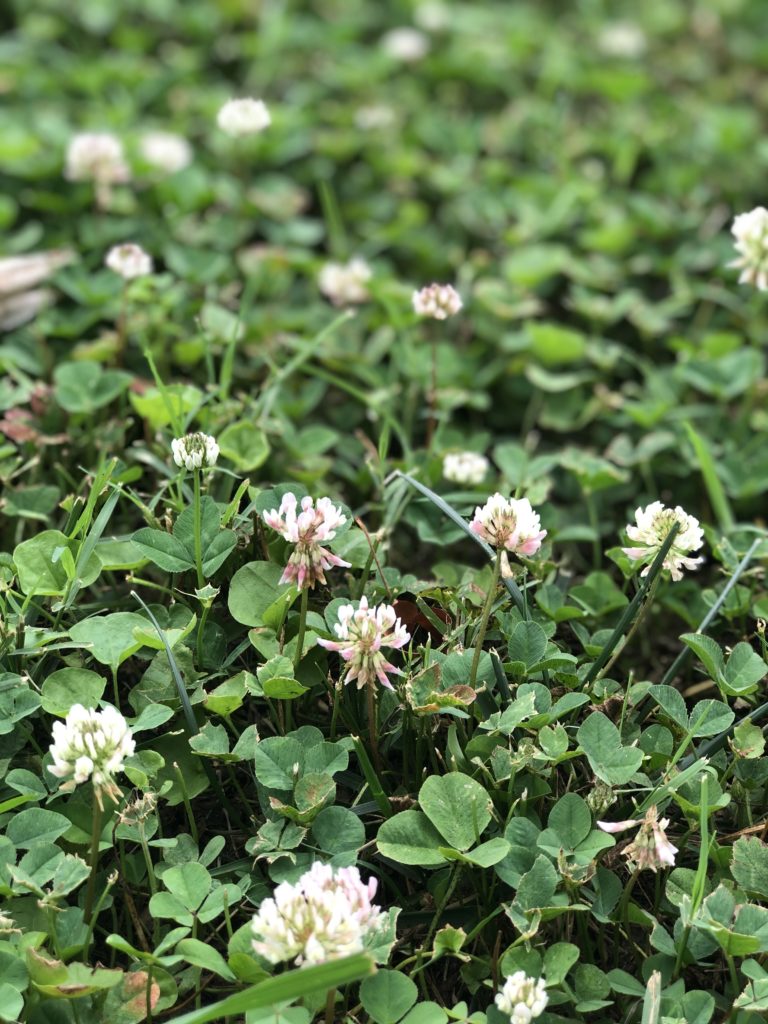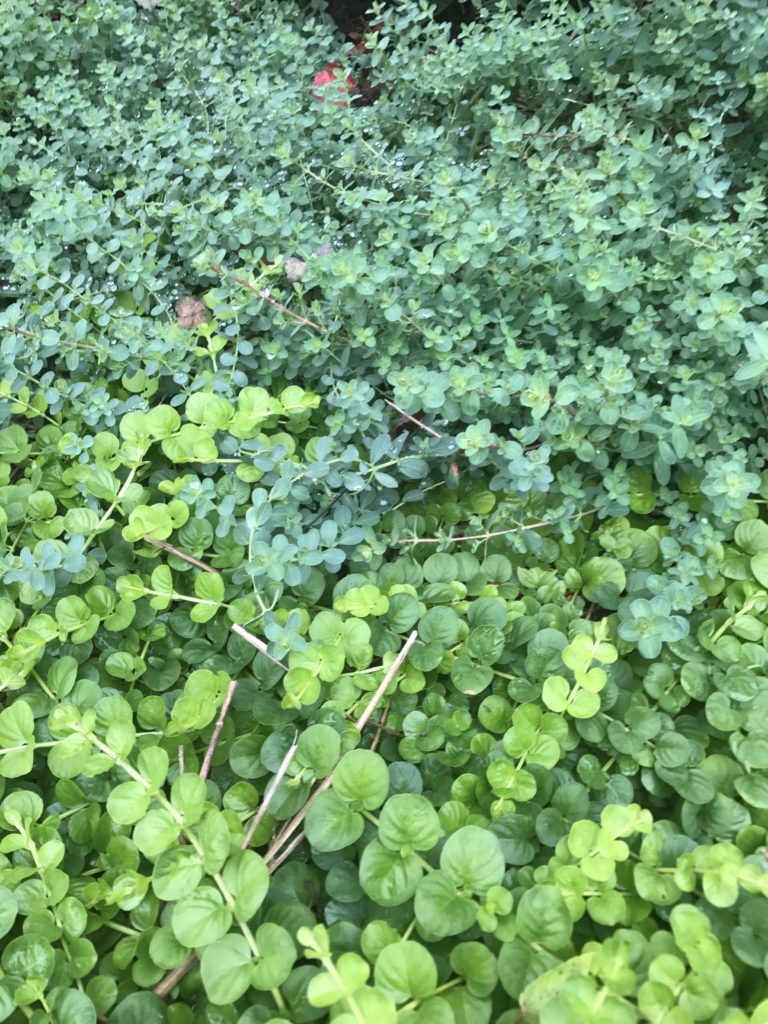
By including species like clovers, lazy lawns can help introduce nutrients to the soil and provide an important source of food for pollinators and wildlife.
Between sod, seed, spraying, mowing, blowing and more, people spend hundreds, sometimes thousands, of dollars each year to establish and maintain ‘perfectly’ manicured monoculture lawns. And while it may earn them the envy of their neighbors down the street, from an ecological standpoint conventional lawns are a complete disaster. (I explain why in my free webinar, Intro to Climate Action Landscaping).
So what’s the solution? You could of course convert your lawn into a garden or raised beds for growing food. Or manage the space as a meadow. Or even plant an orchard. And while these are excellent options that work for certain folks and lifestyles, the reality remains that open space lawns are here to stay. Plus, when we view permaculture in the context of a marriage between our human needs and those of our environment, the rationale for multi-use open areas within the residential landscape is absolutely valid. That’s why we advocate for what we lovingly refer to as ‘lazy lawns.’
You’re probably asking yourself, ‘What the heck is a lazy lawn?!’ While lazy lawns can vary in species composition depending on site conditions and goals, in essence they’re diversified open space areas composed of numerous low-growing, low-management grass and groundcover species that reduce the need for mowing and create resiliency against fungus, disease and pests. When we design and build open space lawns, our primary objectives are to diversify the number of species and choose plants that serve multiple functions and introduce nutrients to the soil. With those fundamental goals in mind, we then select species based on the intended use for the space as well as sun and shade conditions. One example of a lazy lawn is perennial fescue grass mixed with yarrow, dandelion and clover. Another could be clover, creeping jenny and low-growing St. Johns wort. The options are almost endless!

Creeping jenny and low-growing St. John’s wort were integrated into a lazy lawn mix in one open space area at this shady site.
By minimizing or eliminating the need for mowing, lazy lawns can reduce unnecessary fossil fuel emissions. They also reduce or eliminate the need for herbicides and pesticides as well as irrigation. And, by way of increased species diversity, lazy lawns are more resistant to fungus and more readily adapt to microclimates within the yard compared to monoculture (i.e. single species) lawns, allowing different species to thrive where the conditions are best rather than trying to force a single species to adapt to variation in site conditions throughout an entire space yet somehow maintain uniformity. Lazy lawns can also provide important sources of food for pollinators and wildlife.
Ultimately, it is possible to have a lawn that both provides the open space you want or require AND creates positive ecological impact. Plus, who doesn’t like the idea of spending less time and money managing their yard?! Lazy lawns are the perfect regenerative eco-alternative to conventional monoculture lawns.